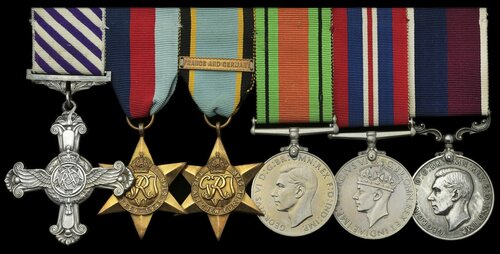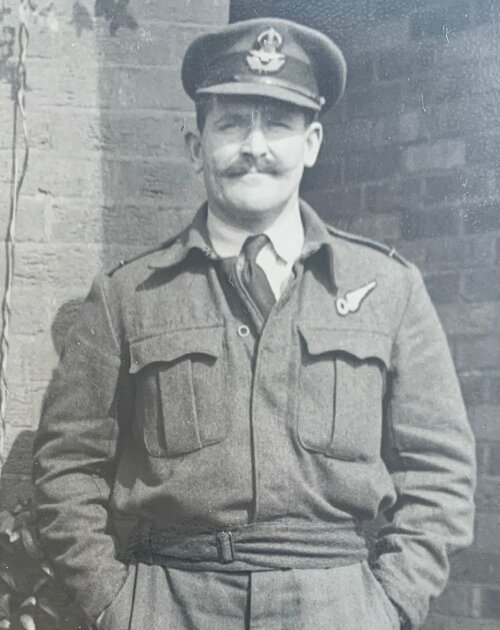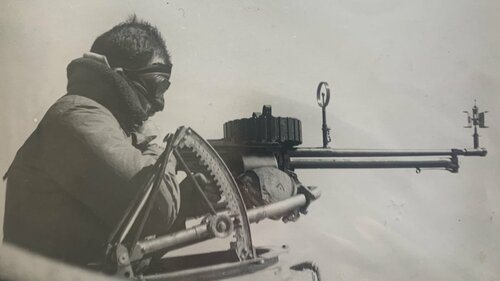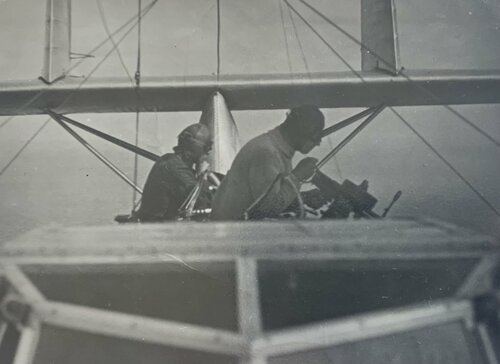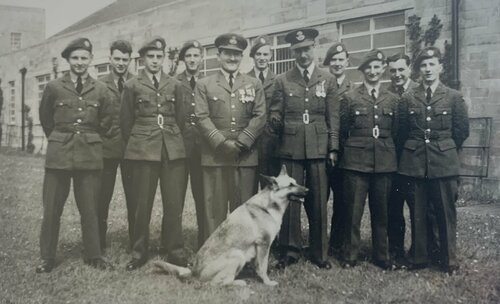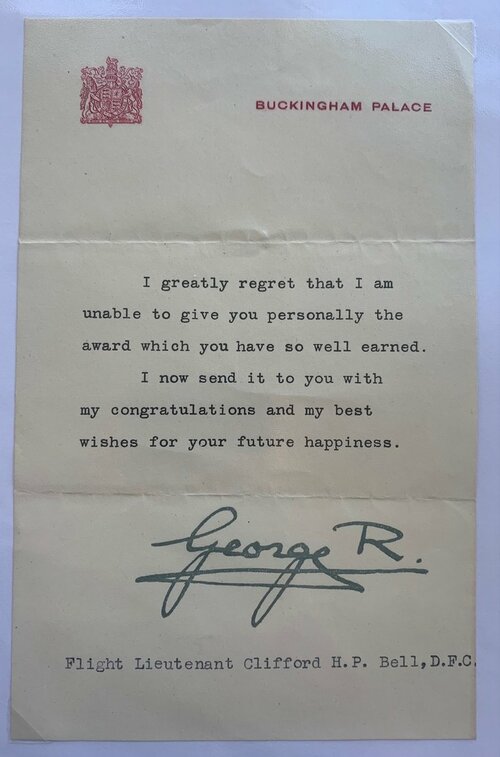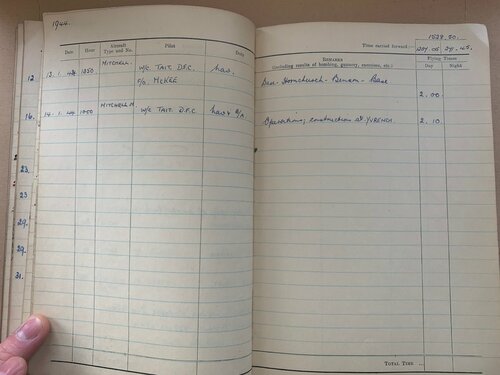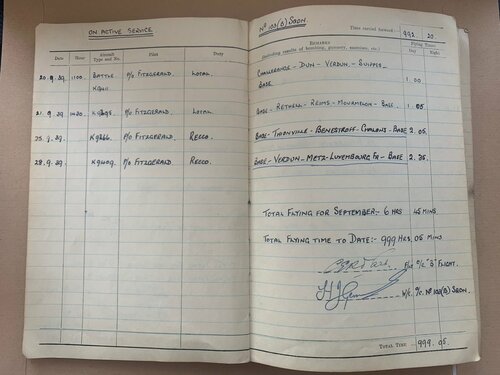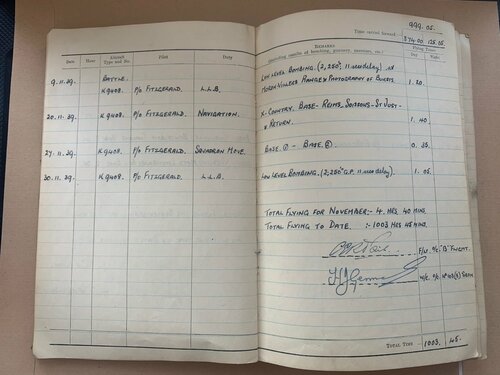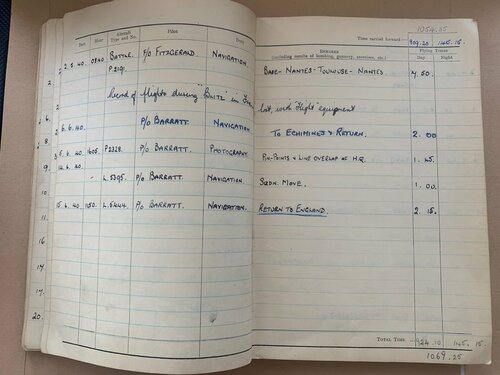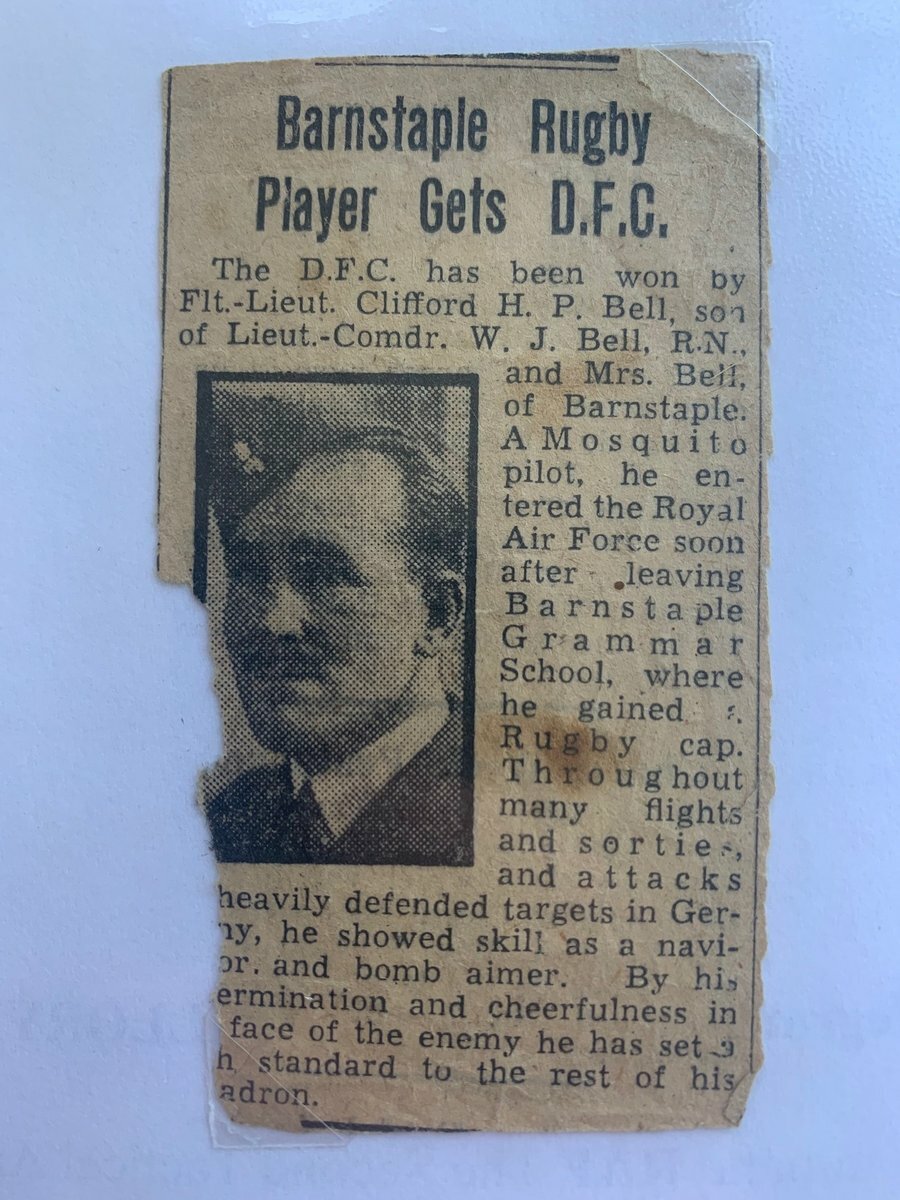Auction: 21002 - Orders, Decorations and Medals
Lot: 248
A very fine and well-documented 1944 D.F.C. group of six awarded to Flight Lieutenant C. H. P. Bell, Royal Air Force, a long-served airman who first entered Halton as an Apprentice in 1928, he flew Battles with No. 103 Squadron during the Battle of France - before notching up an impressive tally of 31 Ops over enemy territory in the Mitchel bombers of No. 226 Squadron and latterly serving with HQ 2nd Tactical Air Force
Distinguished Flying Cross, G.VI.R., the reverse officially dated '1944'; 1939-45 Star; Air Crew Europe Star, clasp, France & Germany; Defence and War Medals 1939-45; Royal Air Force L.S. & G.C., G.VI.R. (Flt. Lt. C. H. P. Bell. R.A.F.), mounted as worn, good very fine (6)
D.F.C. London Gazette 11 August 1944. The original recommendation by Wing Commander C. E. R. Tait, states:
'Flying Officer Bell has participated in 31 operations amongst which have been included attacks on very heavily defended targets such as Bremen, Hamburg, Cologne and Essen. He served in France with the A.A.S.F. (Advanced Air Striking Force) during which period he flew as Observer/Air Gunner in Battle aircraft making low level attacks against the extremely heavily defended elements of the German Army.
In all operations, particularly during long distance night sorties, he has shown proof of his skill as a Navigator combined with great coolness and determination. In recent daylight operations over France in unfavourable weather conditions he has continued to show these qualities.
His experience as an Air Gunner and Observer in peace and war combined with a strong character have largely contributed to the success of the less experienced aircrews to whom he has imparted the benefit of his experience.'
The Station Commander remarked:
'A Regular Airman (Halton) turned Aircrew and now a first-class Officer.
His quiet efficiency, native ability and sense of duty have set the highest possible example throughout his operational tours. To my personal knowledge he has been through experiences that would have deterred less stout hearts, but has always returned for more.
His cheerful acceptance of responsibilities and risks, and his example in knowing his job thoroughly has had a direct bearing on the high quality of his Squadron's operational record. As Squadron Bombing Leader he is now continuing to set the best standard and pass on his dislike of the enemy. Very strongly recommended.'
Clifford Henry Parr Bell was born on 17 August 1911 at Bideford, Devon and entered the service as an Apprentice with No.1 Wing, at RAF Halton in January 1928. Having passed out in December 1930, Bell joined No. 1 Squadron at Tangmere, remaining with them until March 1935. Whilst with No. 1 Squadron, he was part of the 10-man unit, under Flying Officer Morrison, R.C.A.F., who participated in a tour of Canada, flying from Montreal to Ottawa, thence Toronto, Kitchener, Hamilton, Trenton and London (Ontario), before returning to the United Kingdom (Log Book and newspaper cuttings refer).Flying Boats
Bell joined No. 202 Squadron in March 1935, operating on flying boats out of Kalafrana, Malta. The unit were flying Supermarine Scapa's, having converted from Fairy III's. During his first year the unit flew anti-submarine patrols around the island, watching for any Italian incursion, under the mandate of the League of Nations. As those fears subsided, the Squadron were always alert for future conflicts. By December 1937 Bell had totalled some 664hrs 30mins in his Log Books and was also first to test when the Squadron were fitted with London II flying boats. After many happy hours in those craft, Bell took his final flight with No. 202 in November 1938, before being selected to attend an Air Observer's School to qualify as a Navigator.
Fairey Battle's - Fall of France
Having converted to Battle's, Bell joined No. 103 Squadron at Benson in July 1939. He flew with Pilot Officer Fitzgerald and Flight Lieutenant Tait in August 1939 and the unit went over to France with the Advanced Air Strike Force on 2 September 1939. In the months which followed, the Squadron were in the thick of things, with Bell sharing the action. One notable sortie worthy of mention is that of 22 April 1940, for the night recco and nickle raid on Frankfurt, lasting 2hrs50mins of night flying. The Log Book also notes after the entry for 2 May 1940 'Record of flights during 'Blitz' in France lost, with 'Flight' equipment.'
Bell flew back to England in Battle L5444 with Pilot Officer Barratt on 15 June 1940, the Squadron having done all they could to slow the enemy. Bell flew his final Op in Battle's on 25 September 1940, during the Battle of Britain, dropping 4 x 250lb bombs on Boulogne. This took his tally to no less than 11 Ops in Battle's, two of them at night. The first had been recorded on 17 September 1939, for a photo recce on the Siegfried Line.
Bigger and better
Converting to Wellington Bombers soon after, Bell bombed Ostend on 22 December 1940 and Rotterdam on 28 December. He went onto complete 6 further Ops in 1941, including Bremen and Dusseldorf. Bell went off for Instructor Duties in August 1941 and was promoted Pilot Officer on 16 May 1942. Whilst still at the OTU he even formed up to participate in the raid on Cologne on 30 May 1942, the largest ever undertaken at that time. Joining No. 88 Squadron at Oulton in March 1943, he flew on the two daytime raids on Zeebrugge on 17 & 20 April 1943 in a Ventura, again flown by his old comrade Wing Commander Tait. Moved with his crew to No. 226 Squadron at the end of that month, it appears he was given a period of richly-deserved rest, for it was not until 16 September he went on another Op, this time a daytime sortie on Rouen in Mitchell 'B'. His 31st Op was flown on 14 January 1944 on Yvrench, wrapping up a most successful operational career. He was duly recommended for his D.F.C. on 27 January.
With planning coming together for Operation Overlord, the Squadron found themselves a part of the 2nd Tactical Air Force. Given his huge experience of the rigours of the theatre, Bell was posted to its Headquarters from 20 October 1944. He joined AHQ BAFO on 1 December 1945.
Journey's end
Bell was advanced Flight Lieutenant on 23 August 1948 and joined the Instructional Staff of RAF Hullavington - passing on his vast knowledge to the next generation of aviators. He went out to RAF Luqa on Malta in the 1950s and was retired in late 1957. He was removed from the Recall List in September 1971 and died in Derby in November 1993.
Sold together with the following original documentation:
(i)
His two Flying Log Books, covering 10 April 1935-14 January 1944.
(ii)
Three copies of The Halton Magazine & The Daedalus.
A series of material related to the award of his D.F.C., including Buckingham Palace forwarding note in the name of 'Flight Lieutenant Clifford H. P. Bell, D.F.C.', a number of telegrams, letters and newspaper cuttings.
(iii)
A series of original photographs including the recipient, his service and his comrades.
(iv)
Letters and cuttings related to his service, besides his card, dinner invitations.
(v)
A number of his qualification certificates, including Aero-Engine School.
(vi)
A well-presented collection of copied research relating to his entire career, including ORB extracts, all prepared in a folder to illustrate his career.
Subject to 20% VAT on Buyer’s Premium. For more information please view Terms and Conditions for Buyers.
Sold for
£2,700
Starting price
£1600

